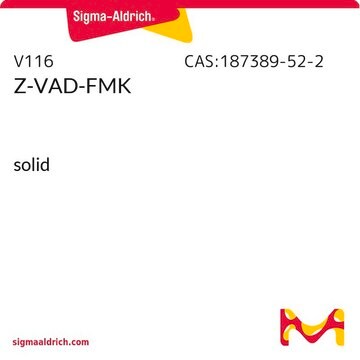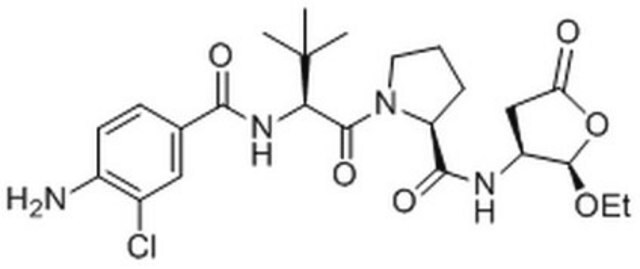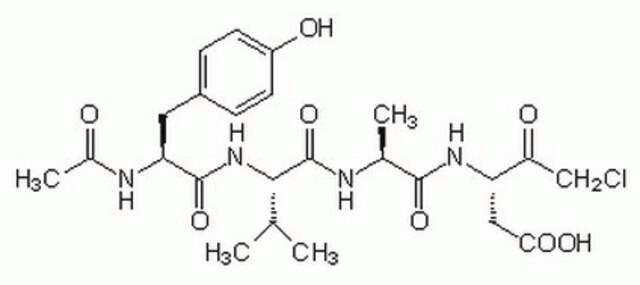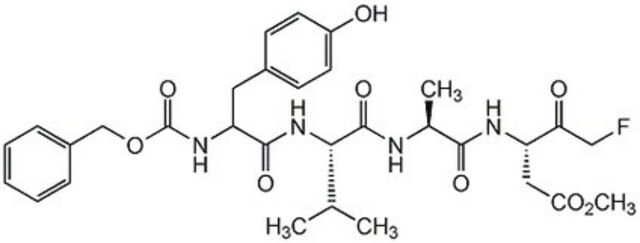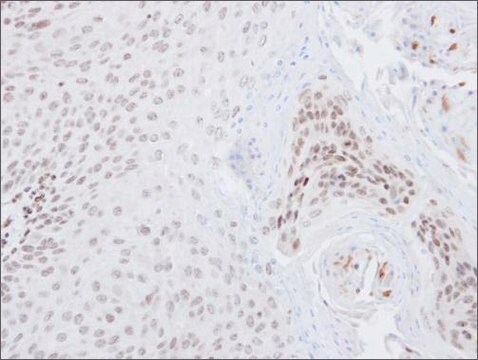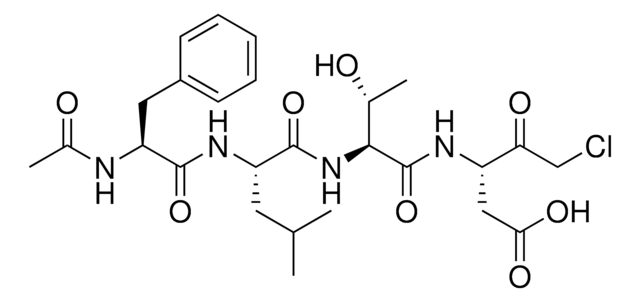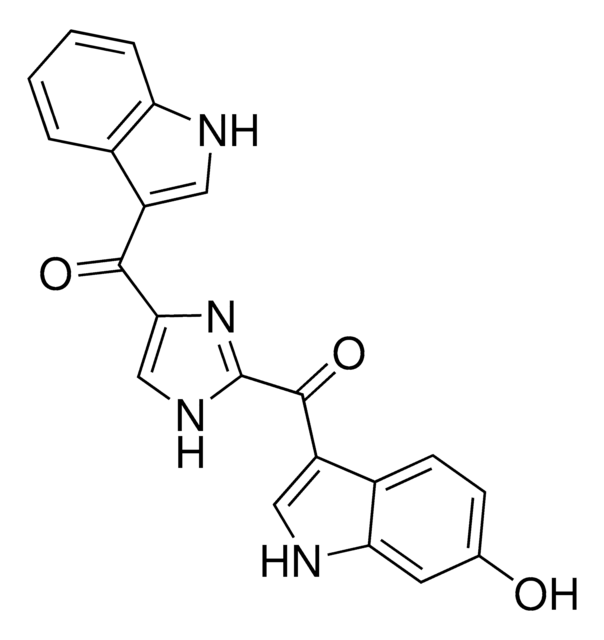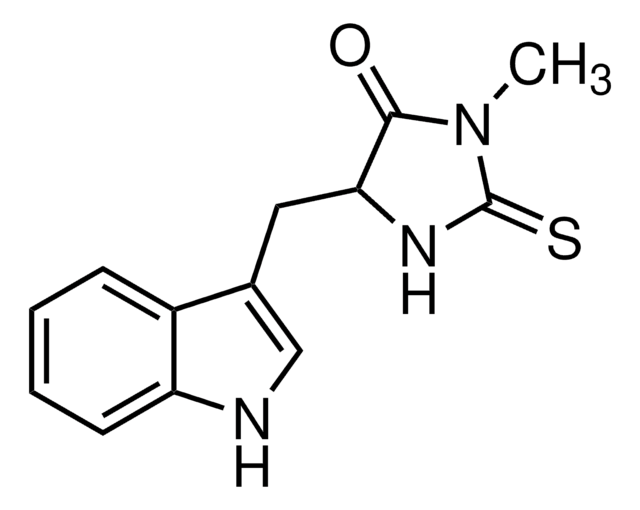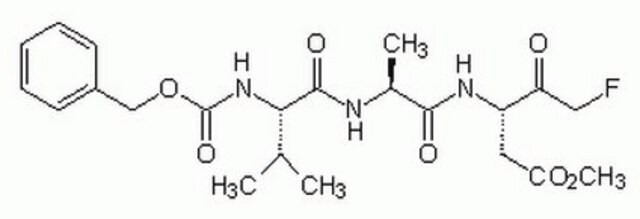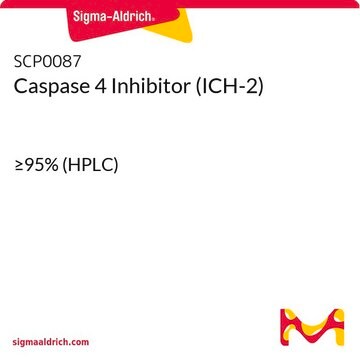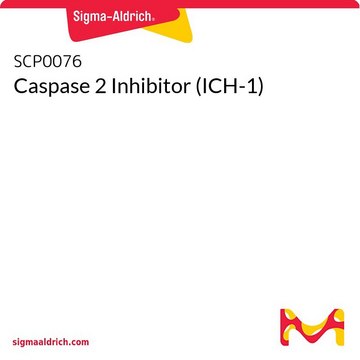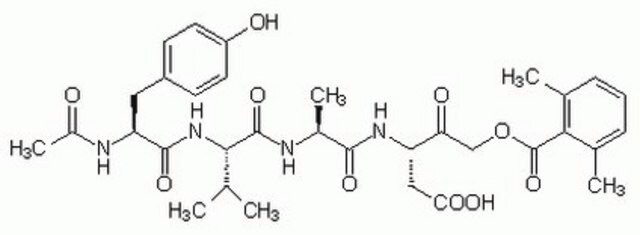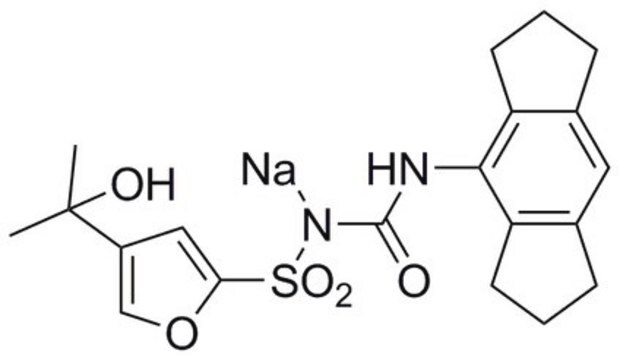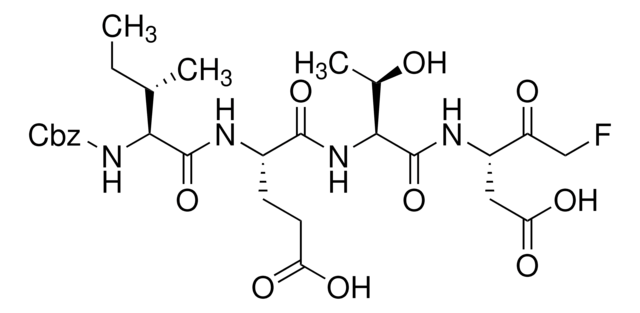SML0429
Ac-YVAD-cmk
≥95% (HPLC)
Sinónimos:
Ac-Tyr-Val-Ala-Asp-Chloromethylketone, N-Acetyl-L-tyrosyl-L-valyl-N-[(1S)-1-(carboxymethyl)-3-chloro-2-oxopropyl]-L-alaninamide, N-acetyl-tyrosyl-valyl-alanyl-aspartyl chloromethyl ketone
About This Item
Productos recomendados
Nivel de calidad
Ensayo
≥95% (HPLC)
Formulario
powder
color
white to off-white
Condiciones de envío
wet ice
temp. de almacenamiento
−20°C
cadena SMILES
CC(C)[C@H](NC(=O)[C@H](Cc1ccc(O)cc1)NC(C)=O)C(=O)N[C@@H](C)C(=O)N[C@@H](CC(O)=O)C(=O)CCl
InChI
1S/C24H33ClN4O8/c1-12(2)21(24(37)26-13(3)22(35)28-17(10-20(33)34)19(32)11-25)29-23(36)18(27-14(4)30)9-15-5-7-16(31)8-6-15/h5-8,12-13,17-18,21,31H,9-11H2,1-4H3,(H,26,37)(H,27,30)(H,28,35)(H,29,36)(H,33,34)/t13-,17-,18-,21-/m0/s1
Clave InChI
UOUBHJRCKHLGFB-DGJUNBOTSA-N
Amino Acid Sequence
Aplicación
- as an inflammasome inhibitor to add to THP-1 cells or PBMC (peripheral blood mononuclear cell) before stimulation
- as a caspase-1 inhibitor injected to C57BL/6 mice
- as a caspase-1 inhibitor, administered into mice before and during hematopoietic stem cell transplantation (HSCT) to evaluate its effect on bone marrow inflammatory injury
- to abolish the histidine-rich protein II (HRPII) effect on transendothelial electrical resistance (TEER)
- as caspase 1 inhibitor, to treat MCF-7 tumor xenograft mice, to validate the role of inflammasomes activation in tumor growth in vivo condition
Acciones bioquímicas o fisiológicas
Características y beneficios
Código de clase de almacenamiento
11 - Combustible Solids
Clase de riesgo para el agua (WGK)
WGK 3
Punto de inflamabilidad (°F)
Not applicable
Punto de inflamabilidad (°C)
Not applicable
Elija entre una de las versiones más recientes:
Certificados de análisis (COA)
¿No ve la versión correcta?
Si necesita una versión concreta, puede buscar un certificado específico por el número de lote.
¿Ya tiene este producto?
Encuentre la documentación para los productos que ha comprado recientemente en la Biblioteca de documentos.
Los clientes también vieron
Artículos
We offers many products related to caspases for your research needs.
Contenido relacionado
Apoptosis, or programmed cell death (PCD), is a selective process for the removal of unnecessary, infected or transformed cells in various biological systems. As it plays a role in the homeostasis of multicellular organisms, apoptosis is tightly regulated through two principal pathways by a number of regulatory and effector molecules.
n proliferating cells, the cell cycle consists of four phases. Gap 1 (G1) is the interval between mitosis and DNA replication that is characterized by cell growth. Replication of DNA occurs during the synthesis (S) phase, which is followed by a second gap phase (G2) during which growth and preparation for cell division occurs. Together, these three stages comprise the interphase phase of the cell cycle. Interphase is followed by the mitotic (M) phase.
Nuestro equipo de científicos tiene experiencia en todas las áreas de investigación: Ciencias de la vida, Ciencia de los materiales, Síntesis química, Cromatografía, Analítica y muchas otras.
Póngase en contacto con el Servicio técnico